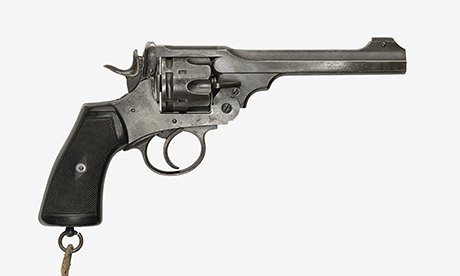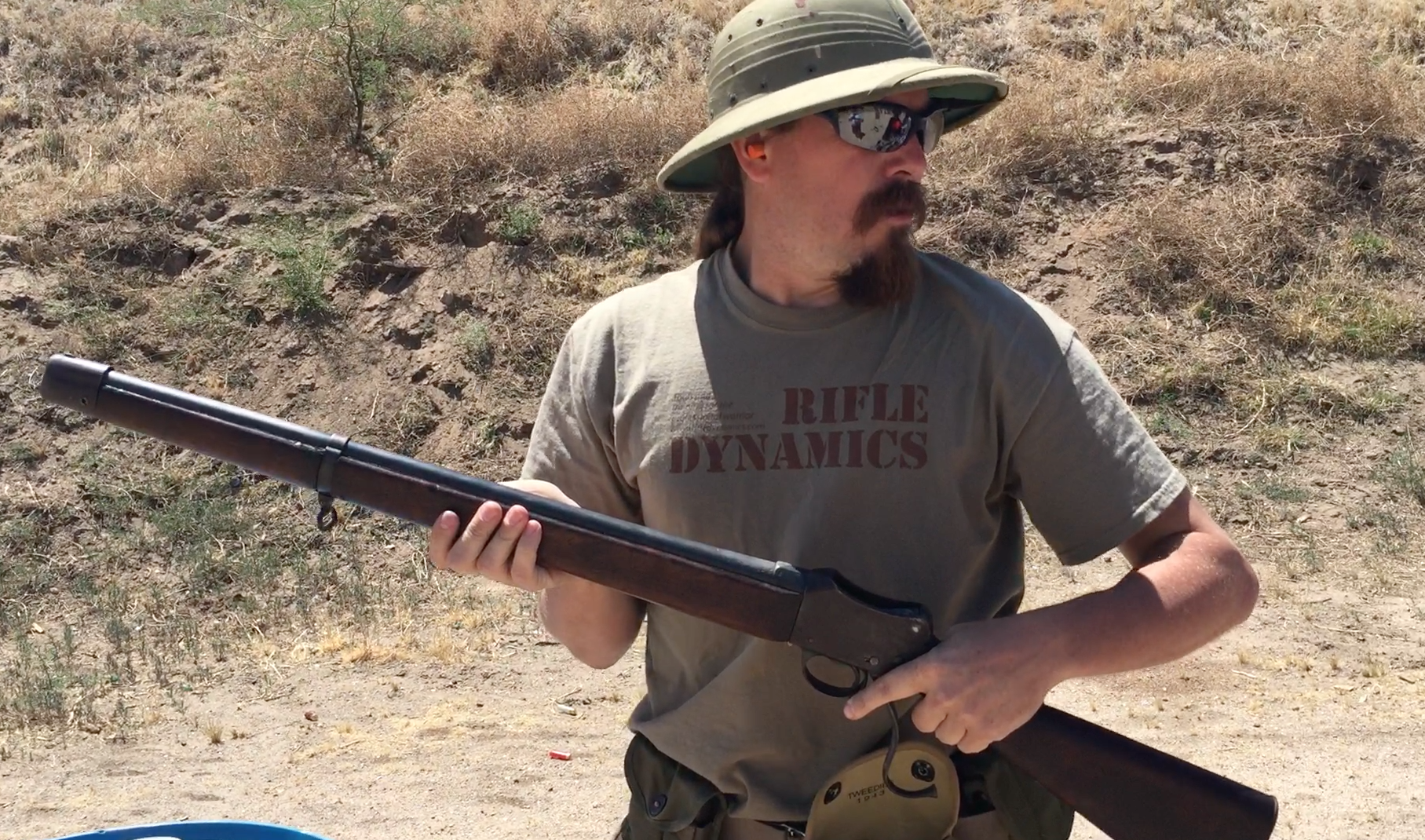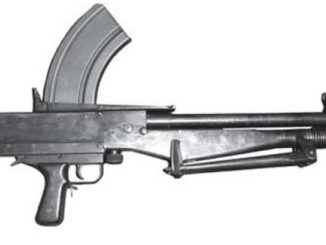The Welrod was a program to develop a silent assassination pistol for British SOE (Special Operations Executive) late in 1942. It needed to be chambered in the .32 ACP cartridge, be effective to a range of 15m, and have its firing not recognizable as a firearm at 50m distance. The project was led by Major Hugh Quentin Reeves, who developed much of SOE’s inventory of gadgets.
The Welrod concept was ready in January 1943, and it was not quite the Welrod that we recognize today. This initial MkI design used a fixed internal 5-round magazine and a thumb trigger, along with a rifle style bolt action mechanism. Samples were produced in April 1943, and testing showed that it was rather awkward to use. A MkII version was quickly developed in June 1943 with a more traditional style of grip and magazine, and formal trials led to the adoption of that MkII design. Incidentally, this is why the first Welrod produced was the MkII, and the later production version in 9mm was designated the MkI (it was the first mark of 9mm Welrod).
Eventually many thousands of Welrod pistols were manufactured, and they almost certainly remain in limited use to this day. This example we have today is the only surviving MkI example, however.
Many thanks to the Royal Armouries for allowing me to film and disassemble this unique prototype! The NFC collection there – perhaps the best military small arms collection in Western Europe – is available by appointment to researchers:
https://royalarmouries.org/research/national-firearms-centre/
You can browse the various Armouries collections online here:
https://royalarmouries.org/collection/




.32, along with being universally available (even in German armories), was considered a very accurate round. And of course it was subsonic. I should think the reliability of a centerfire cartridge also had something to do with the selection of the Welrod over any .22RF.
It would seem a better idea to have the bolt handle on the left side, so a right handed man could keep the gun in his shooting hand and work the bolt with his left. But perhaps they did not wish to encourage rapid fire, or else the designers were left handed?
I agree with your first statement. The trigger looks a lot easier for a righty’s thumb (as Ian demonstrated) than a lefty’s index finger, though.
Mike:
You are right, the thumb trigger must be meant to be used by a right handed person. I doubt a left handed bolt action was a thing in 1942, perhaps they just did not think of it?
Keeping the firing grip steady while performing support functions with the support hand is one of those incredibly obvious (especially for a pistol!) ideas that took forever to become obvious.
From today point of view, cycling the bolt with the left hand seems logical.
But we have to remember at that time, it was standard to use the strong hand to perform all actions (reloading, cycling, shooting).
I wonder if instead of creating a covert gun from scratch, why not build on any number of ‘pocket-pistol’ designs that were known at the time. An improved version of the double or single barreled Derringer pistol seems to be a good for covert use.
Or a cheap recoil stop lever for a common semiauto pistol
“(…)double(…)barreled Derringer(…)”
Can you have common suppressor for both? If not would not that require 2 separated suppressor which would lead to bigger size?
Would it be too much of a leap to guess that Major Hugh Quentin Reeves is the inspiration for Ian Fleming’s “Q” character in the James Bond novels?
There can’t be many thumb trigger pistols out there.
Not sure if it full-fill definition of thumb trigger but PSG used somewhat similar trigger, see 1st photo from top https://en.topwar.ru/14135-zhasmin-i-fialka-udar-po-pistoletam-i-ballonchikam-gazovogo-tipa.html
If this weapon was built for a right handed person (90% of the population?), why was the bolt NOT not on the LEFT side, so that one could shoot the weapon right handed and manipulate the bolt with the left hand?
This is just OH SO STUPID, and one sees it in all manner of weapons even today.
Right handed shooter? LEFT HANDED BOLT, FOOLIO!
Simples explanation would be that they used bolt handle from some existing bolt-action rifle.
So, this “HUGH” is the “Q” in the real world?
32 acp? Oh, please?
I’d rather have a 22 LR. It penetrates better, especially if shot into the base of the skull?
I think the 32 acp is a fairly useless round, unless you are seriously up close and personal, and use the muzzle blast to help take out the heart of your target?
I mean, seriously? The 32 acp is a piddly little dick round.
“(…)unless you are seriously up close and personal,(…)”
According to description requirements called for be effective to a range of 15m